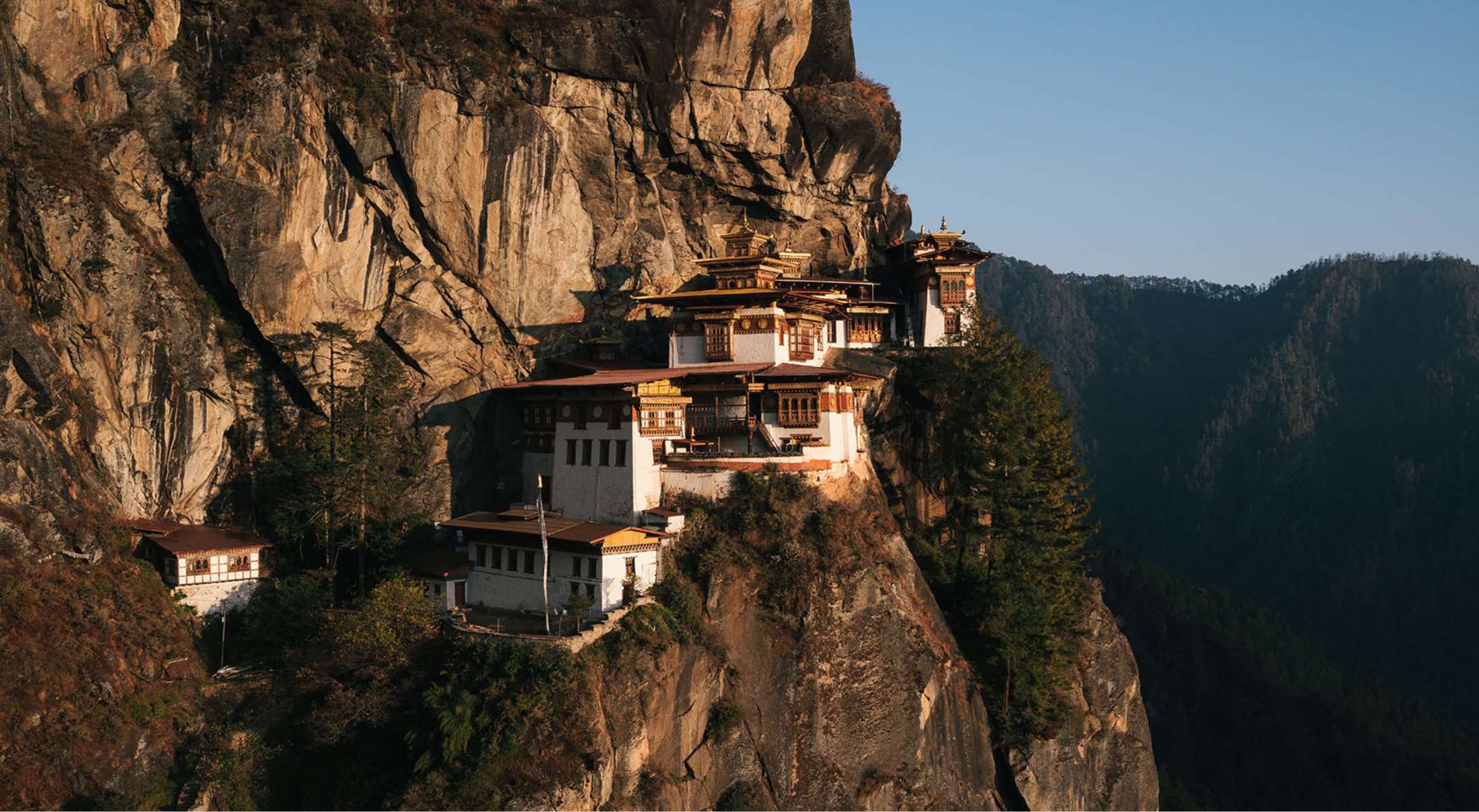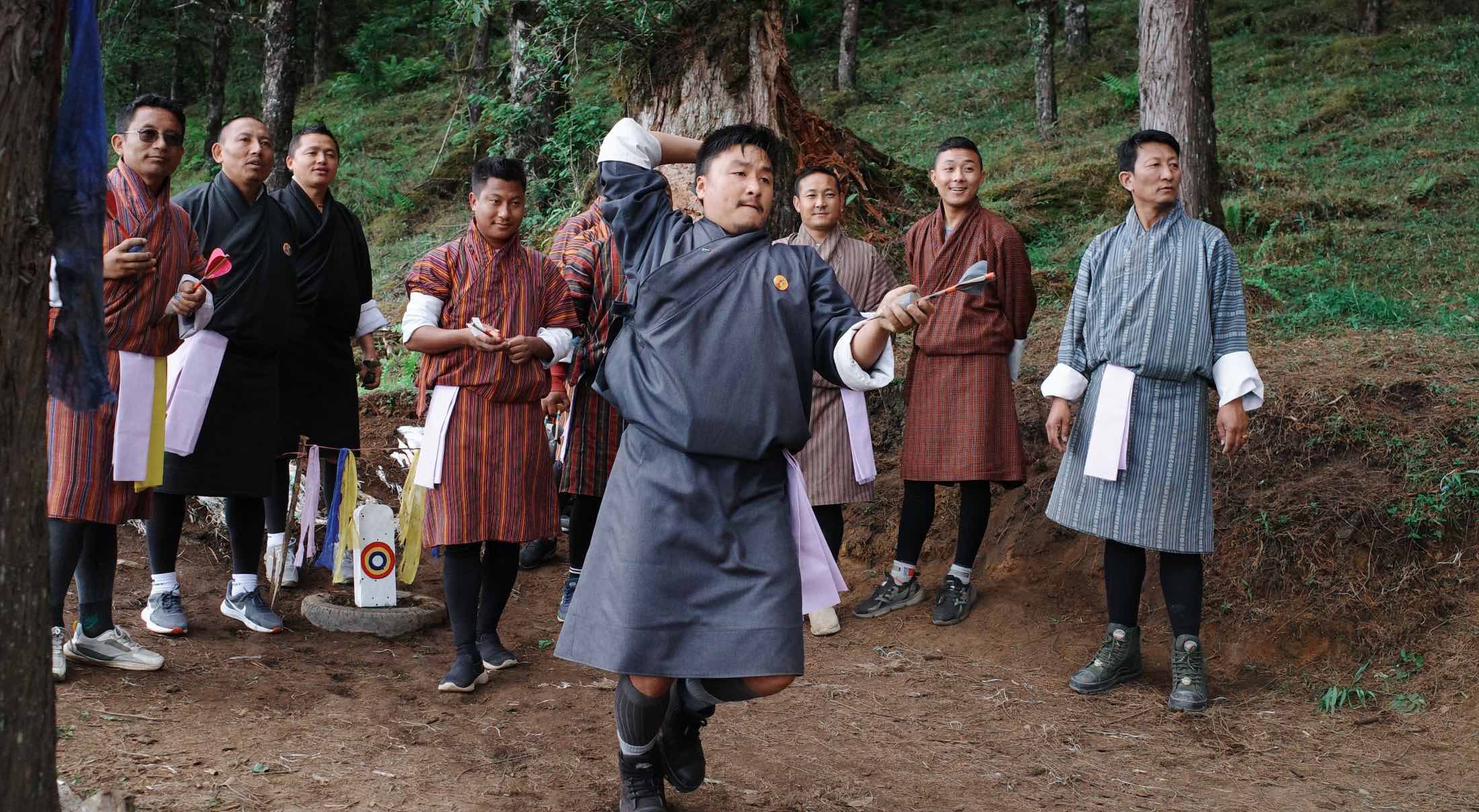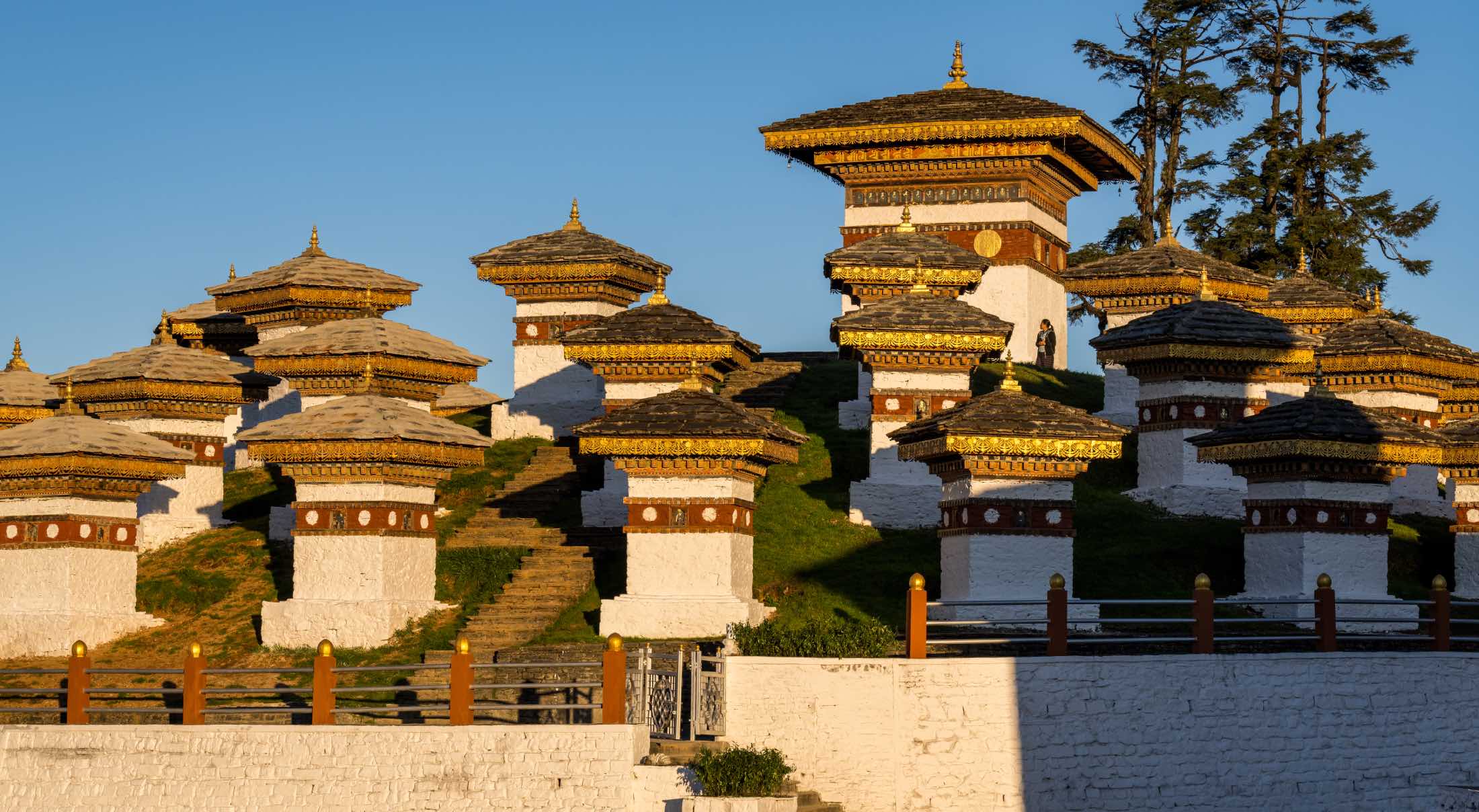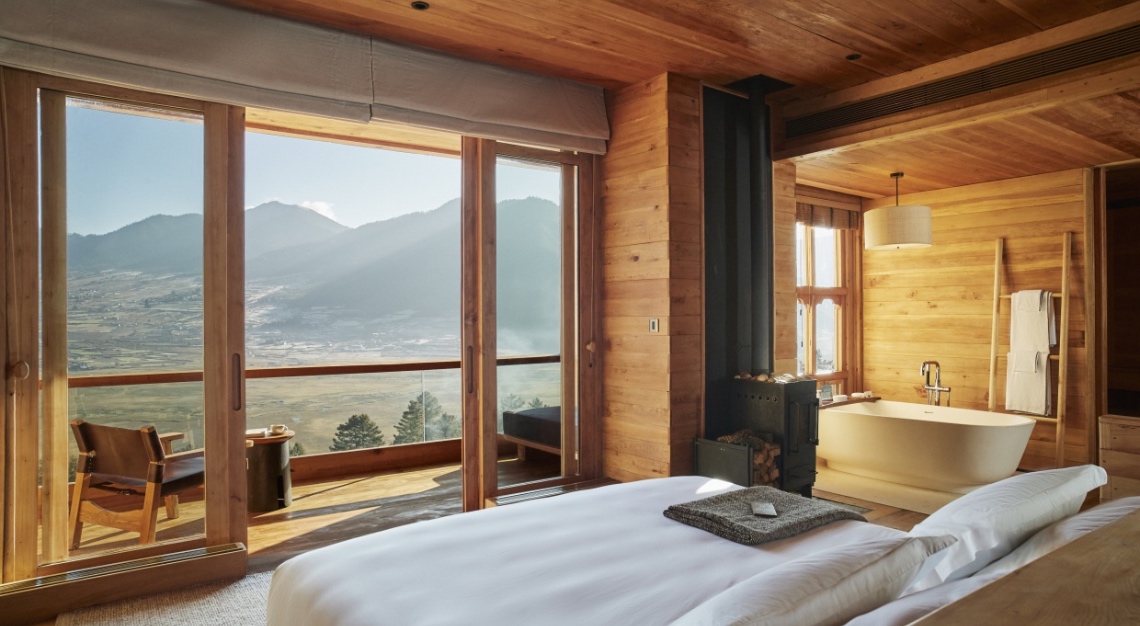Known as the Land of the Thunder Dragon, Bhutan’s untouched landscapes and rich culture will leave an indelible mark on those who visit
Editor’s note: See other Escape Plan stories here.
Ladies and gentlemen, I have found the path to nirvana (the state of enlightenment, not the band). Or so I’d hoped to proclaim after a five-hour hike to the world-famous Tiger’s Nest monastery. After all, there had to be a reward for completing the strenuous trek, right?

For a typical Singaporean, the idea of attempting an excruciating mountainous climb with no tangible reward at the end may be difficult to compute. But that, as I found out, is what separates us from the Bhutanese—their sense of simply partaking in life’s journey as a divine experience is what makes them and their country so fascinating.
If you’ve ever wanted to visit Bhutan, the good news is that it’s much easier to do so now. Although you could arrange a trip on your own, you’re best served going through one of the many dedicated tour operators who will handle everything from logistics, visa applications, personalised itineraries and accommodation bookings to the procurement of an expert guide and driver.

Additionally, the country’s Sustainable Development Fee (levied on tourists for the preservation of Bhutan’s landscapes and culture) has been halved from US$200 to US$100 per day.
Untouched Landscapes
A daily compulsory fee may sound excessive. But once you’ve experienced Bhutan’s untouched landscapes and culture, you’ll want to play your part in preserving them. Immediately upon landing at Paro Airport (the country’s only international airport), you’ll become intimately aware of the country’s lush greenery and looming mountains.
Nature in Bhutan isn’t relegated to a background role nor is it at the forefront. There’s a symbiotic relationship between the people and their environment, evinced by the winding dirt roads that follow the contours of the mountainous landscape.

As you travel through the country, you’ll be struck by the Bhutanese people’s seemingly accepting approach to life as they trek along the rugged landscapes in their colourful traditional garb while nonchalantly picking fresh strawberries off the plants growing along the side of the road.

To ease yourself into Bhutan’s rich culture, you’ll want to make its capital, Thimpu, your first stop, and Amankora Thimpu, your first lodge. The 16-suite resort, featuring whitewashed stone buildings designed to resemble one of the country’s many historic dzong fortresses, is intimate and private. As with any Aman property around the world, Amankora Thimpu is a serene retreat, complemented by top-class service and wellness facilities.

Each suite is spacious and adorned with traditional Bhutanese decor. You’ll also find top-of-the-line amenities, including a terrazzo bathtub and a traditional wood-burning stove known as a bukhari that can be lit should it get chilly at night. There’s also a banquette window seat, from where you’ll get fantastic views of the surrounding pine forest. If your muscles are aching from your hikes, book the signature hot-oil Ayurvedic massage at the lodge’s spa.
The Slow, Good Life
The best way to experience Bhutan is to meander through the land and allow its cultural and natural splendour to quietly reveal themselves. Your dedicated guide will ensure you experience the best on offer. If you’re like me, the concept of a guide always tethered to you would sound perplexing. After all, wouldn’t that detract from the experience?

The answer, it turns out, is no. Rather than impede, the presence of Yeshey, my guide throughout the journey, makes the trip memorable. With his deep knowledge and laid-back disposition, it was as if I had a personal historian who knew where to go and what to show me.
That said, make sure your guide brings you to the Simply Bhutan museum and Dochula Pass before leaving Thimpu. You’ll learn plenty about the country’s history and traditions at the museum, while Dochula Pass, located 3,100m above ground, offers panoramic views of the Himalayan peaks. There, you’ll find 108 memorial chortens honouring the Bhutanese soldiers who lost their lives protecting their kingdom.

Most online travel guides will recommend heading straight to Punakha after Thimpu. I suggest taking a detour to the glacial valley of Gangtey. This serene valley, though far from a bustling hub, offers views of some of the most wondrous landscapes in the country.
And there’s no better place to take it all in than at Six Senses Gangtey. From the lodge, which is perched on top of a hill, the view of the valley is spectacular. The expansive panorama of the misty mountains and the lush, undulating valley below inspires tranquillity and awe.

The property has eight suites, each with large windows that allow guests to enjoy the stunning views. There’s even a large balcony that beckons me to spend the night, in sub-15-degree temperatures, gazing at the moonlit mountains. The rooms are spacious for two, but if you’re travelling with family, I recommend the two-bedroom villa.
While in Gangtey, you’ll want to visit Gangtey Monastery. One of the oldest monasteries in Bhutan, its ornate architecture, with walls adorned with murals of Buddhist symbols and deities, will captivate you. If your guide is as enthusiastically spiritual as Yeshey, you’ll even get an in-depth explanation of the various symbols and beliefs.

“This is Samsara,” says Yeshey as he points to one of the murals. “It is a cycle of birth and death, and the goal is to escape it—to reach nirvana.”
Enlightened Paths
From the cool air of Gangtey, you’ll want to make your way to the warmer climate of Punakha, the former capital of Bhutan. While there, take a short hike to Chimi Lhakhang, a temple dedicated to Drukpa Kunley, who is also known as the Divine Madman. As you trek towards the serene temple grounds, you’ll be amazed at the number of women, some old and frail, trudging up the steps with committed devotion. It is a reminder of the deep spirituality that is interwoven with the fabric of everyday life in Bhutan.

If you plan to stay the night here, consider Six Senses Punakha. Perched high above the valley and affectionately referred to as the Flying Farmhouse, it offers serene views of the terraced rice fields and the winding Mo Chhu River below. You’ll find spacious suites and villas with private terraces, and indulgent amenities such as a heated outdoor pool and an organic garden that supplies fresh produce to the on-site restaurant.

After soaking in the spiritual ambience of Punakha, head back to the city you first landed in, Paro. For those seeking an authentic experience, Paro offers numerous homestay options, where you can interact with the locals, sharing meals and stories with your hosts.
For a blend of authenticity with creature comforts, consider Paro Rema Resort. The quaint resort overlooks a picturesque river, where you can partake in a traditional Bhutanese hot-stone bath.
Of course, you cannot end your journey in Bhutan without tackling the 6km hike to Tiger’s Nest Monastery, which sits at an altitude of 3,120m. The climb is arduous but achievable. There’s even a cafe about a third of the way where you can rest and decide whether to continue. But if one wanted to find nirvana, then surely, they must press on, right?

“You’re tired,” Yeshey said as I laboured up another step. “Don’t forget to take in the view.”
He was right. I may not have reached nirvana, but boy, was the view at the end of the climb worth it.
Special thanks to Druk Air and SoulTrips.
This story first appeared in the August 2024 issue. Purchase it as a print or digital copy, or consider subscribing to us here






